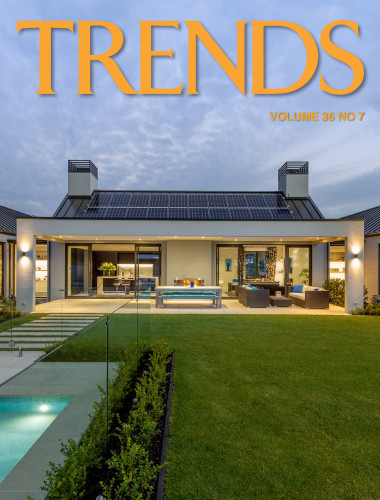The most effective ways to heat your home
From fireplaces to underfloor heating, we’ve covered the most popular forms of home heating in this helpful guide
When Old Man Winter rolls around, no house is safe. That is, of course, unless you’ve got a robust home heating strategy in place. Thankfully, for the modern consumer, there’s really no end to the options available when it comes to warming up your house.
Let's run through some of the most effective methods.
Heat pumps
Efficient, effortless and affordable to run, heat pumps take ambient heat from outside and transfer it inside. Using a fan, they then distribute this warm air throughout the space. You can choose small units for apartments and bedrooms, and larger units for living areas.
Heat pumps can also reverse their operation when summer rolls around, thus cooling your home and saving you buying an air conditioning unit or other cooling system. Note that heat pumps can be expensive to buy and install.
Electric heaters
Plug-in electric heaters are one of the most popular home heating options, largely because they’re so cheap and readily available. They do come with a few downsides, however.
Unlike a heat pump, they’re not capable of uniformly heating large spaces. Consumer NZ found that electric oil fin heaters did a poor job heating areas closer to the floor.
So where should you use them?
We’d recommend a plug-in electric heater for guest rooms or the home office.
Gas heating
The sky’s the limit when it comes to gas heating, with mock fireplaces, wall-mounted units and even large central heating systems available. Using gas heating, however, will depend on whether you can actually access it, as not every home has piped natural gas.
If you’re already hooked up to natural gas for your hot water and cooking, you’ll likely find this is an affordable option.
Alternatively, you can use bottled gas in temperate climates.
Fireplaces
For all you traditionalists out there, the fireplace is the oldest home heating option there is – but they’ve come a long way. Modern fireplaces are stylish, better at distributing heat and, of course, they’ll mean your electricity bill is substantially lower.
They’ve also come a long way technically from the old open fire – with double burning systems, and the potential to add in a wetback to heat your hot water system.
Many local authorities now ban open fireplaces or old wood burners because of the pollution caused by their inefficient burning.
Downsides of a fireplace – stacking the firewood, cleaning out the ashes, and coming back to a cold house and needing to get the fire going!
Ducted systems also mean you can send this heat throughout the home if you’re willing to commit to the installation.
Underfloor heating
You’ve probably seen this type of heating system in more than a few bathrooms, but did you know it’s actually an effective way of heating your entire home? In some cases, it’s a much better option than traditional systems.
Let’s break it down.
To start, there are two types of underfloor heating. There are water-based systems (hydronic), which use pipes beneath the floor, and dry, which use electrical coils or cables. Both systems work on the basic principle of radiating heat up through the floor.
If you’re having trouble deciding on one or the other, just know that hydronic systems can use a number of different systems to heat the water – meaning flexibility for you.
Generally, the most obvious benefit with underfloor heating is that it’s hidden from view. However, it’s also a much more uniform way of heating a home.
The downsides with such a system? Well, unless you’re building new, you’ll likely have to tear up the floor – and that’s rarely cheap!
Story by: David Renwick
Home kitchen bathroom commercial design
Personality plus
Diving into nature
Classic looks, contemporary efficiency
Trends 19-08
Let’s be frank, the more design inspiration you take on board the better informed your own project decisions will be – t...
Read More



